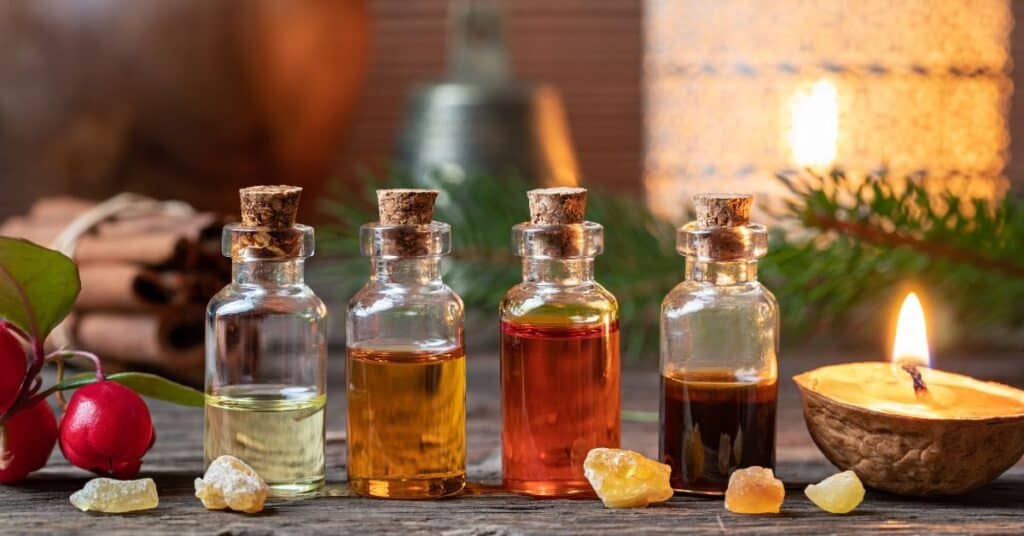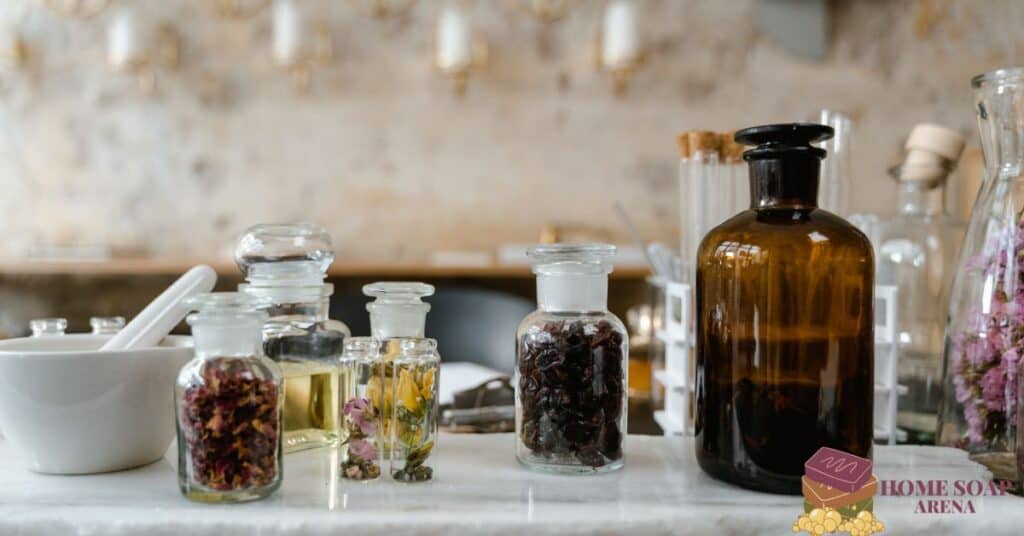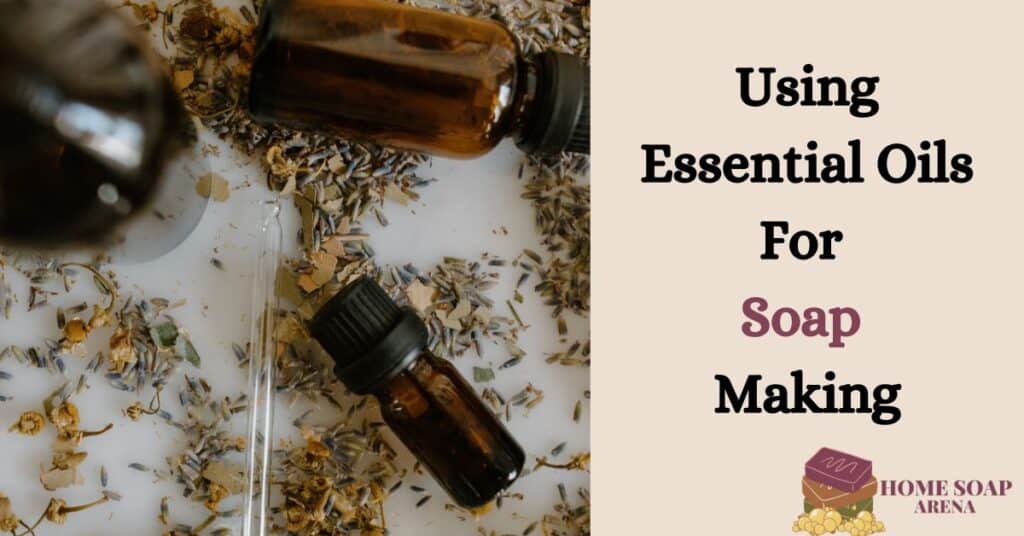Table of Contents
- How To Find Essential Oil Suppliers For Soap Makers
- Where To Find Suppliers Of Essential Oils For Making Soap
- What Is The Best Essential Oil For Soap Making
- How Much Essential Oil Do I Need For Soap Making
- Who Is The Biggest Importer Of Essential Oils
- How Do Companies Make Essential Oils
- Final Thought
Do you want to know the Supplier essential oil for soap making? This is what I will explain to you in this article.
Based on my experience in the soap manufacturing industry, Bulk Apothecary has swiftly developed to become the nation’s leading supplier of specialty ingredients since its establishment in 2010.
You can rely on them as your source for quality fragrance oils, certified organic essential oils, and other soap ingredients.
In addition to a full variety of specialty ingredients, they also provide a full line of ready-to-private label items such as bath bombs, cold process soaps, candles, and personal care products.
However, as you continue reading, you will find a selected selection of essential oils commonly used in soap making for their fragrance and skincare characteristics, as well as information on how to find essential oil suppliers for soap makers.
Now, let’s get started.
How To Find Essential Oil Suppliers For Soap Makers
Want to learn everything about essential oils in soap and cosmetics in one place?
You undoubtedly want the greatest value when buying essential oils, especially if you operate a company!
When buying essential oils, soap manufacturers need help knowing what to look for:
1. Choosing Right. Essential oils before stocking up are crucial:
First, compare apples to apples, not apples to oranges! When choosing essential oils, know the botanical name and country of origin.
More than choosing and utilizing essential oils by name, like eucalyptus or lavender, is required.
All essential oils should have their botanical name, the Latin name of the plant species from which they are produced.
Each type of eucalyptus essential oil smells distinct.
Most people think of Eucalyptus globulus essential oil, which is very camphorous but not too so.
Other eucalyptus species include radiata, polybractea, citriodora, dives, and others. Some are citrusy, others woodsy.
The scent of an essential oil also depends on its country of origin. The plant’s oil output is affected by climate and soil.
Other influences include agriculture, post-harvest management, and harvest and processing altitude.
So, I buy essential oils by botanical name and the country of origin. I get the same essential oil species from the same nation and seller whenever feasible.
Superior evidence includes a Certificate of Analysis or Gas Chromatography/Mass Spectrometry Report.
Essential oils include several components or natural compounds. Each component affects the essential oil scent.
2. Supplier Evaluation Before Ordering:
You should create ties with your vendors, including essential oil providers! Consider these before choosing the finest essential oil suppliers:
Ask the provider about essential oil storage and order fulfillment.
They should follow proper storage practices like you!
Check the supplier’s essential oil batch numbers or distillation date. This will help you assess shelf life once you have it.
Ask about GC/MS results for essential oils you’re buying. Find out if they do reports on every essential oil batch, simply some, or have a mechanism to fulfill internal quality requirements.
Without GC/MS reports, essential oils for soap manufacturing are still good, but quality control is needed.
(A general soap manufacturing supplies firm may not be able to finance GC/MS testing on one product category.)
Ask the provider if they distill their essential oils, work directly with distillers, or buy from a firm that does. Being down the supply chain is OK, provided you trust it!
Check whether the source sells tiny samples to smell the essential oils! Even beginners should compare supplier samples. Your nose knows I guarantee. This is also a great way to try different essential oils!
Where To Find Suppliers Of Essential Oils For Making Soap
Now that you know what to look for before buying and where not to buy, how about we speak about where to get essential oils? Yes.
My purpose in mentioning where to get essential oils is to present you with as many alternatives as possible so that you may conduct your research.
You may be pickier about essential oils for soap making than I am, or you may want to browse around for lesser pricing – it’s all up to you!
Here’s a quick list for you:
- Alpine Organics
- Natural Appalachian Valley Products
- Arizona Soap Company
- Atlantic Spice Corporation
- Berjé
- Berry Bramble
- Apothecary in Bulk
- Gray, Camden
- CandleWic
- The Chemistry Store
- Smells That Everyone Knows
- Botanicals by Dreaming Earth
- Botanicals Eden
- Body & Bath Elements
- The 7 Most Important
- Depot Essentials
- Important Wholesale
- Catalina’s Essentials
- America’s FPI
- Fragrance Laboratory
What Is The Best Essential Oil For Soap Making
I have compiled a list of the best essential oils for use in soap making, along with suggested uses, aromas, and health benefits:
1. Essential oil of lavender
The lavender essential oil has a herbaceous, flowery aroma and is a mid-note. Don’t let its dated image discourage you from giving it a try, even though it’s not everyone’s first pick. It’s timeless.
The calming and relaxing effects of lavender have earned it a well-deserved reputation.
The aroma of lavender lingers and mixes well with many other oils. Lavender oil should make up no more than 3% of your soap’s overall weight, per our recommendation.
If you want to see how lavender essential oil works in soap, check out our lavender cold-process soap recipe.
2. Essential Oil of Lemon
Make your soaps smell like summertime. Add some lemon essential oil to your soaps for a smell that’s equal parts fresh and energizing.
Both regular and organic lemon essential oils are available in our store. The Soil Association certifies us and performs annual inspections to ensure we meet their high requirements.
Five percent lemon essential oil would be great in soap. If you’re having trouble getting the lemon aroma to stick in your soap, consider mixing it with a base and middle note essential oil.
The addition of lemon essential oil enhances the argan oil melt-and-pour soap.
3. May Chang Essential Oil (Litsea Cubea)
Although it is not often used, this note is great for adding a hint of citrus and a summery scent to your soaps as a middle or top note.
The addition of May Chang to your soaps will give them a perfume that is at once bright, fresh, and zingy.
If you like to cook with strong scents, this soap is perfect for cleaning your hands afterward and leaving a pleasant aroma behind.
Use it at a rate of 1% to 1.5% by weight in your soap making process. For a triple citrus punch, mix it with lime, lemongrass, and bergamot.
How Much Essential Oil Do I Need For Soap Making
The recommended amount of fragrance or essential oil to add to cold-process soap to achieve a strong aroma is 0.7 ounces per pound of soap.
You can use 0.3 ounces per pound for melt-and-pour applications. This figure will change depending on the type of oil you use.
The Cherry Almond Fragrance Oil, for instance, packs quite a punch. The maximum amount per pound of cold process soap is 0.2 ounces.
Check out Bramble Berry’s Fragrance Calculator to determine the ideal quantity. Read how to get the most out of the fragrance calculator here.
Our testing and safety criteria developed by the International Fragrance Association (IFRA) and the Research Institute for Fragrance Materials (RIFM) are the basis for the suggestions made by the Fragrance Calculator.
Each has a maximum recommended concentration in cosmetics and bath products. Excessive usage might be irritating to the skin.
Some aromas are rejected even when given the highest rating. The cold process is a hostile environment because of the many shifts in pH that occur there.
Lemon and other citrus essential oils, as well as pure coconut scents, have a short shelf life. Fortunately, you may still use them to make melt-and-pour soap, scrub, etc.
This Marbled Melt and Pour Soap has a refreshing smell thanks to the use of lemon essential oil.
Who Is The Biggest Importer Of Essential Oils
The majority of the essential oils that the United States buys come from France, China, and India. The United States is the world’s top importer of essential oils.
The top 3 importers of essential oils are the United States (75,950 shipments), India (36,944 shipments), and the Netherlands (31,867 shipments), in that order.
The top three product categories for imported essential oils into the United States are:
- 33012990 is the HSN Code
- 33019090 is the HSN Code
- 33011990 is the HSN Code
These statistics, which are current through August 7, 2023, are based on Volza’s United States Import data.
Export-import shipments of essential oils from 70 nations to the United States are included in the import data, together with the names of the purchasers, suppliers, and LinkedIn profiles of the key decision-makers.
How Do Companies Make Essential Oils
Distillation, expression, enfleurage, solvents, and carbon dioxide are only some of the other techniques that may be used.
Distillation:
The most common technique for producing essential oils is distillation, which may be done at home if the right equipment is gathered.
Steam is injected through the plant material in a big stainless steel or copper. It was still condensing the aroma molecules into a vapor.
After entering a condenser flask, the vapor is cooled back into a liquid state. Water and oil are separated from the liquid that emerges from the condenser.
Expression:
Oils from nuts and seeds are often processed in this way. Expression, often known as “cold pressing” due to the lack of heat involved, is the process of pressing plant materials to extract oil.
Enfleurage:
Enfleurage, which gained popularity in 19th-century France, is ideal for fragile flowers and plants that would be damaged by distillation or expression.
In this method, oil is used to remove oil. The oil from the flower or plant is absorbed into the base oil after being placed on top of the oil in a glass dish for a while.
Carbon Dioxide with Other Solvents:
Solvent extraction involves combining the plant material with a solvent like acetone and agitating or shaking the mixture vigorously for a long period.
Doing so will allow the essential oil to seep into the carrier.
Carbon dioxide (CO2) becomes a liquid solvent when subjected to high enough pressure, and this solvent may be used to extract the essential oil in the same manner as acetone.
The use of carbon dioxide is a novel but rapidly growing method.
Final Thought
Now that we have established that Knowing your provider is the most crucial factor to consider when purchasing essential oils.
You want to buy from a reputable provider who either distills their goods or collaborates closely with distillers.
When you can rely on your provider, you know you’re getting a high-quality product. Feel free to inquire!
Understand the supply chain and the origins of the plants from which your essential oils were derived.
These are some of the reasons why individuals frequently buy from larger firms with proven reputations, such as doTerra.
Buying essential oils that fulfill the stringent criteria of soap-makers is difficult, but finding a reliable supplier alleviates some of the stress.
These guidelines will assist you in identifying high-quality essential oils.



